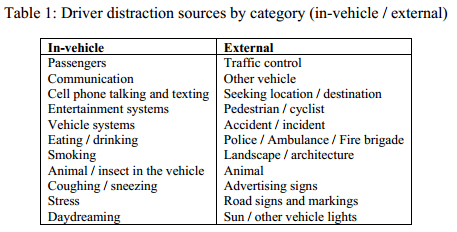
The objective of this research is the critical assessment of the strengths and limitations of driving simulator studies on driver distraction. For this purpose more than 40 scientific papers have been examined with respect to the design of driving simulator experiments on the effects of various sources of driver distraction (in-vehicle or external). More specifically, for each experiment reviewed, several basic characteristics have been recorded and analysed such as the sample characteristics (size, sex, age distribution), the experiment design (number of trials, duration and type of driving tasks, simulated road and traffic environment), as well as the distraction source examined (cell phone, conversation, visual, music, driver assistance systems, etc.). Through this analysis it was found that the majority of studies are based on small samples, between 30-40 participants, in most cases not representative of the general population (e.g. mostly young or middle aged). The most common distraction sources examined are visual distraction and cell phone use. The simulated road environment of most experiments was rural, whereas ambient traffic is not explicitly simulated. The number and duration of trials vary considerably. Driver distraction is measured in terms of its impact to driver attention (hands-off the wheel, eyes-off the road), driver behaviour (vehicle speed, headway, lateral position, driver reaction time) and driver accident risk. The analysis suggests that the design and implementation of such experiments is still inconsistent and often does not conform to experimental design principles.
| ID | pc169 |
| Presentation | |
| Full Text | |
| Tags | driver behaviour, driver distraction, driving simulator |






